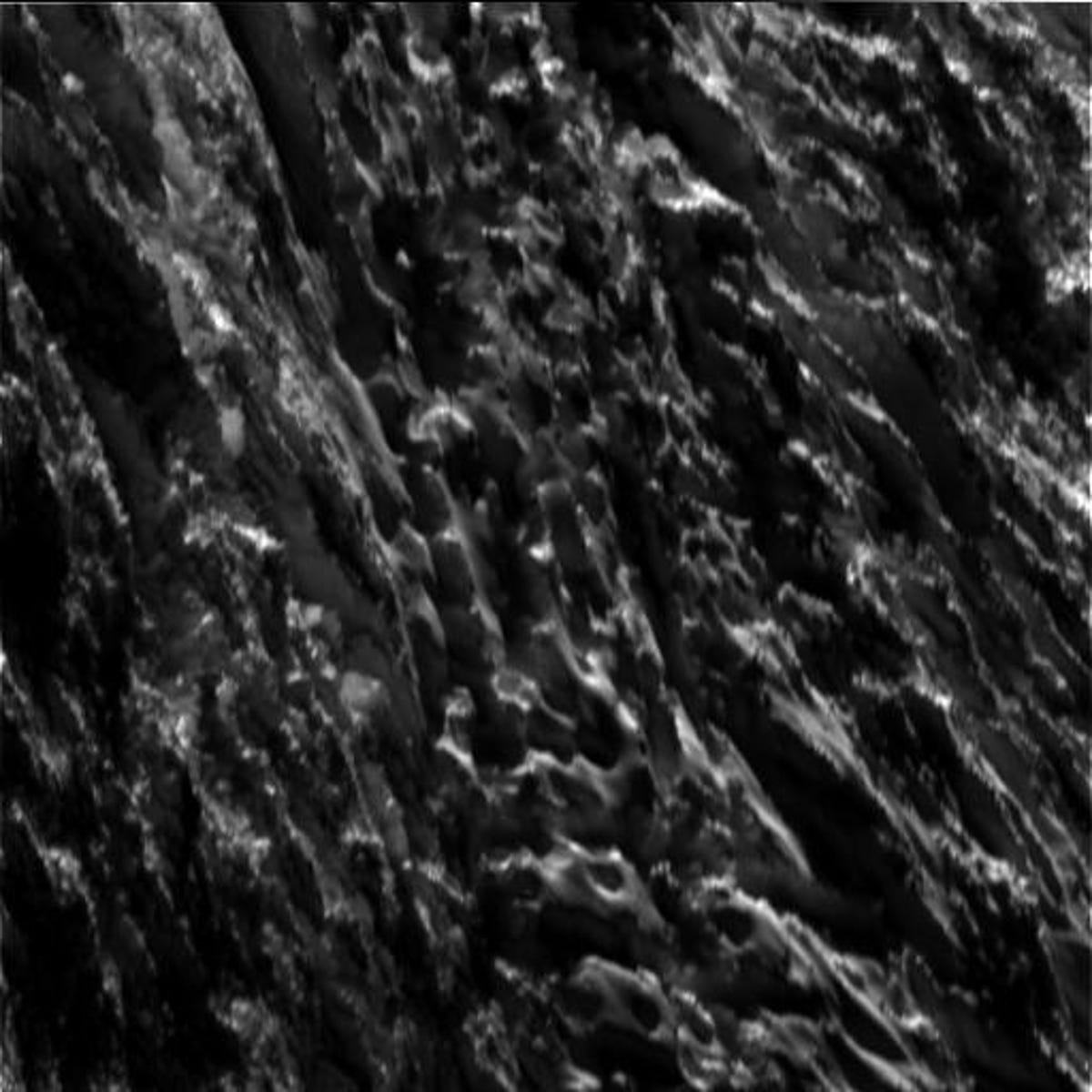NASA plunges into Enceladus' icy plumes (pictures)
Here's the first batch of images from the Cassini spacecraft's extremely close pass by Saturn's frozen moon Enceladus.

Icy surface
The Cassini spacecraft on Wednesday flew within 30 miles of Enceladus' rugged, icy exterior surface.
The close pass also took the spacecraft through a mysterious plume of liquid, ice and gas particles shooting out of the south pole of the Saturnian moon. Cassini collected samples during the pass, which scientist hope will teach us more about Enceladus and its potential habitability.
Southern Enceladus
The southern hemisphere of Enceladus, taken on approach by Cassini.
South pole geysers
Cassini's target for the fly-by, the strange geysers shooting out of Enceladus south pole, backlit by the sun.
A moon and rings
Enceladus drifts above the rings of Saturn, as seen by Cassini this week.
Not what it appears to be
The full globe of Enceladus, believed to be an icy shell concealing a hidden global ocean.
Mist?
It's not yet clear what we're seeing in this image taken from Cassini's raw feed. Could this be what Cassini saw as it flew through the plume?
Digital Enceladus?
There looks to be some digital noise or other artifacts on this unprocessed image of Enceladus taken this week. Whatever it is, it creates an interesting effect.
Shining spray
Another image of the plumes, this time inverted and with some interesting glare or other visual effects going on.
So long, Enceladus!
Shown without its plumes visible, Enceladus hovers near the edge of the frame in this image. Scientists will continue to process the data from the close fly-by as Cassini prepares for a final, high-altitude pass in December.

